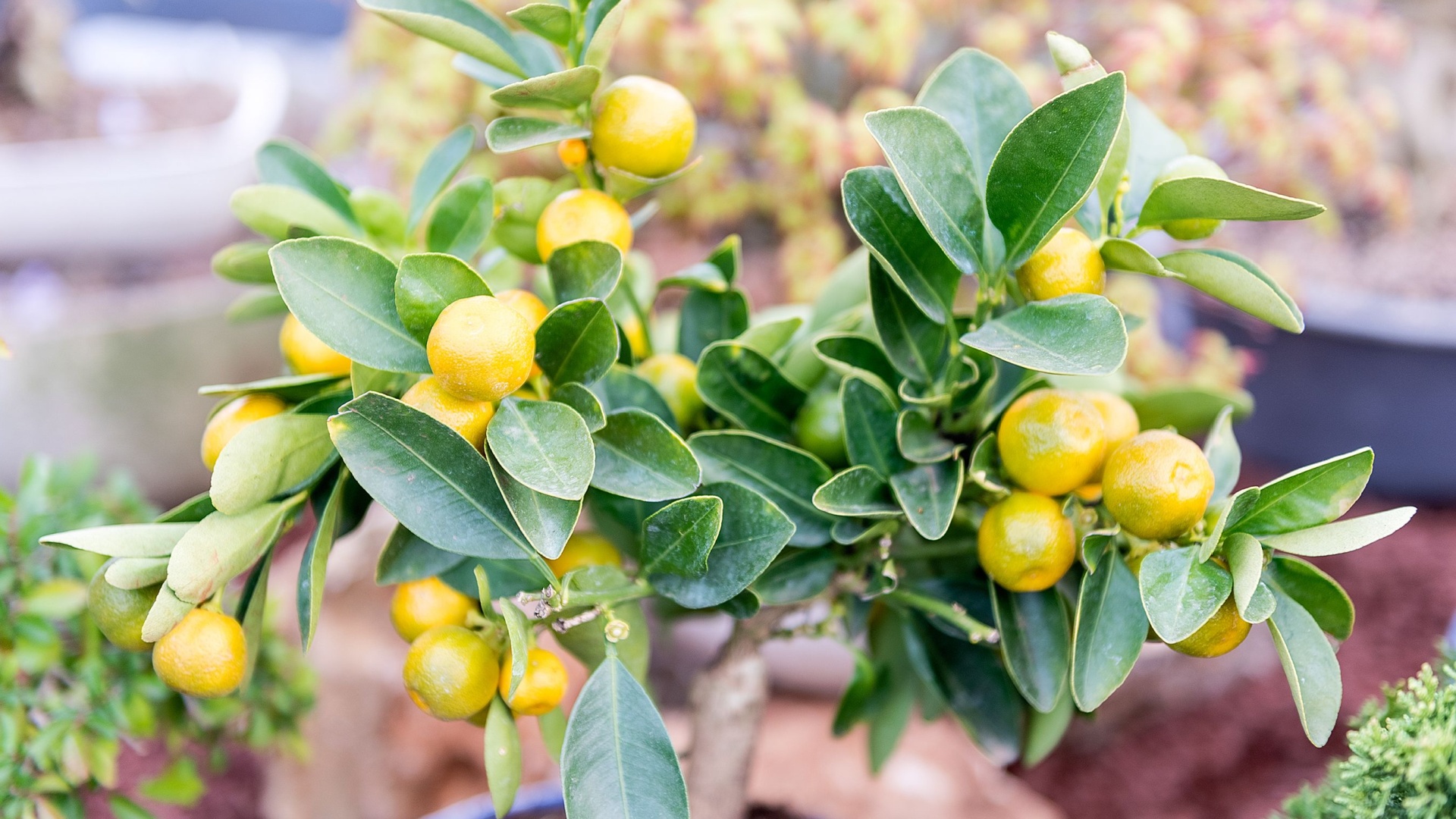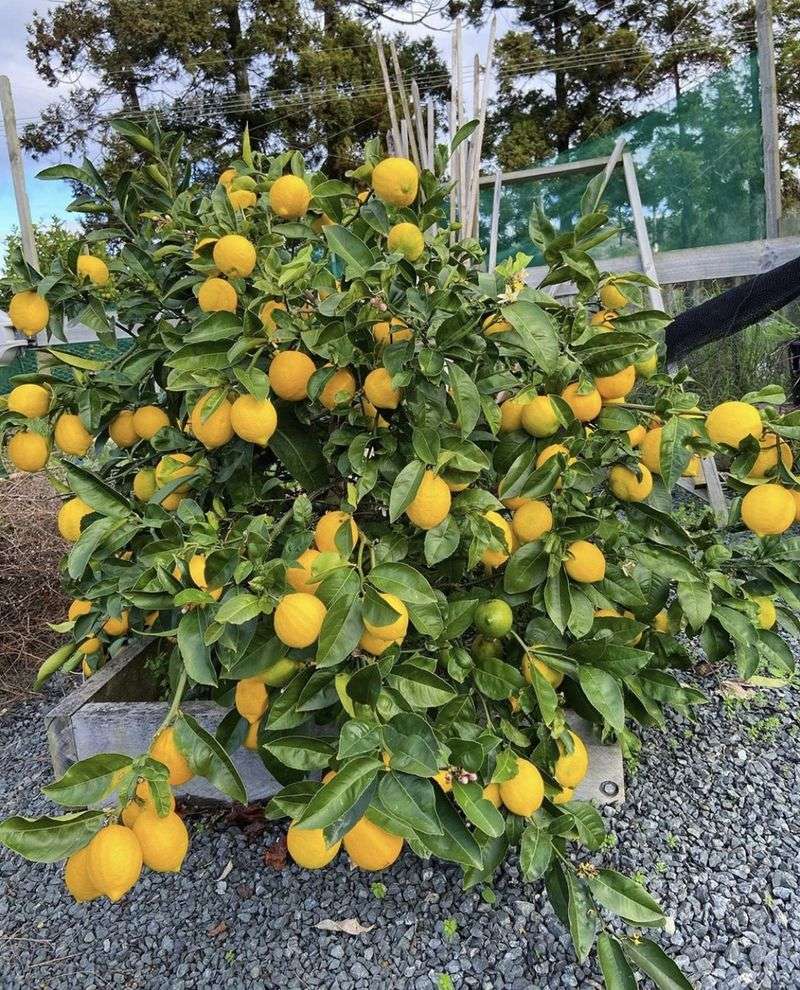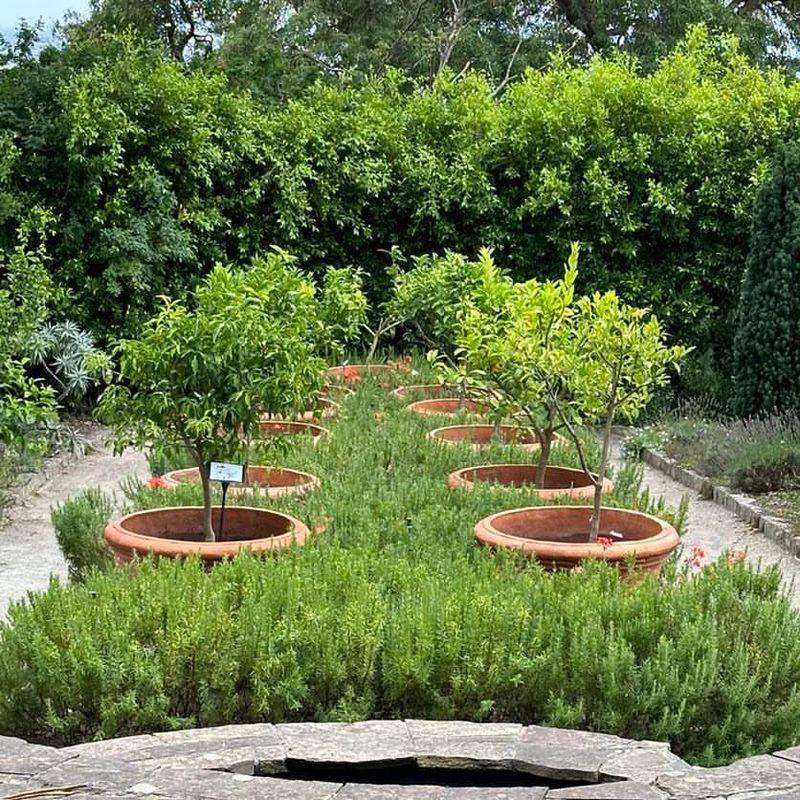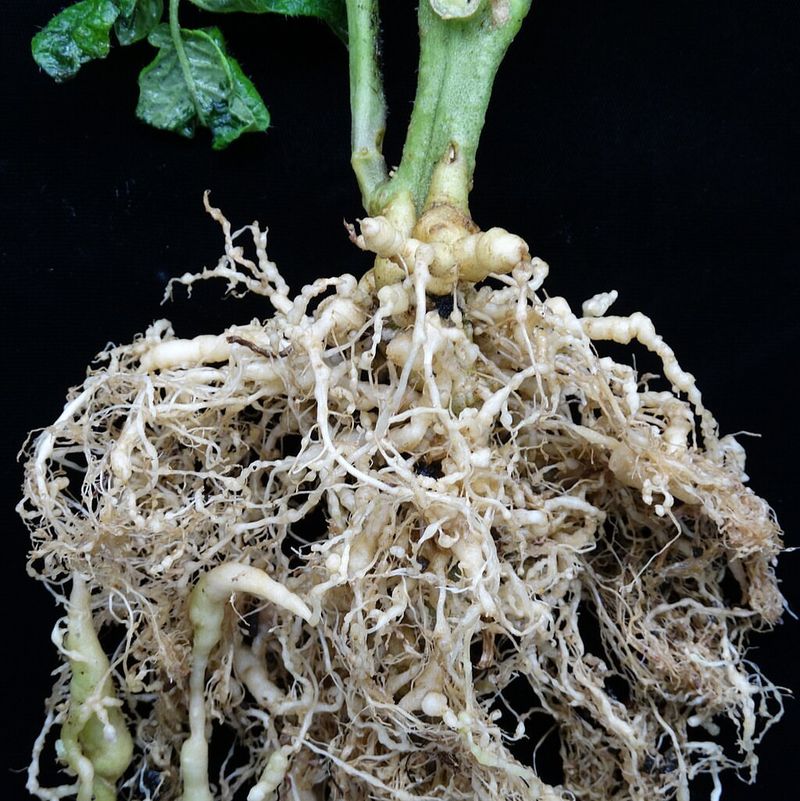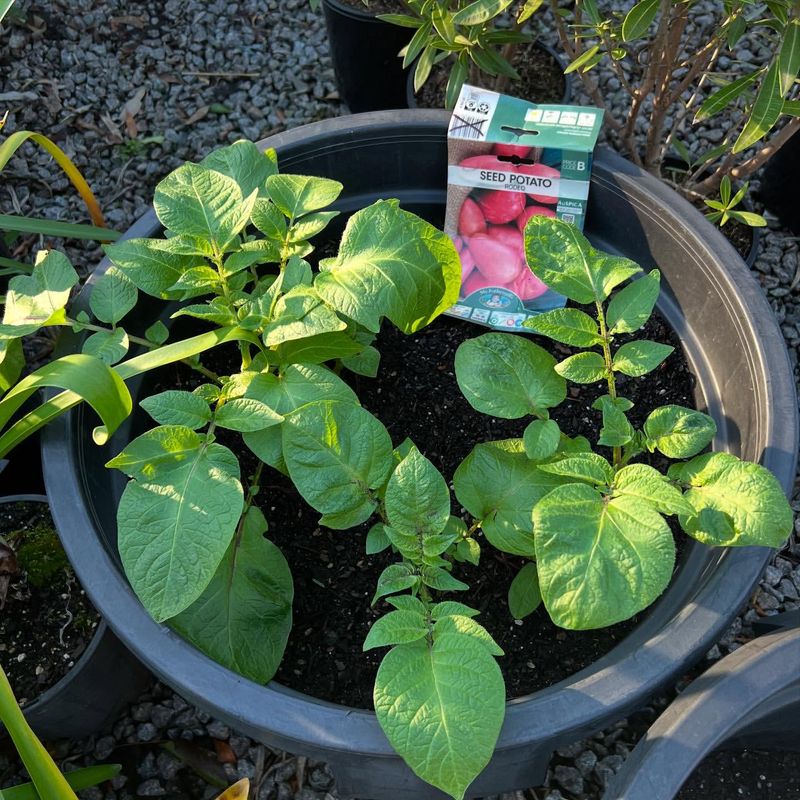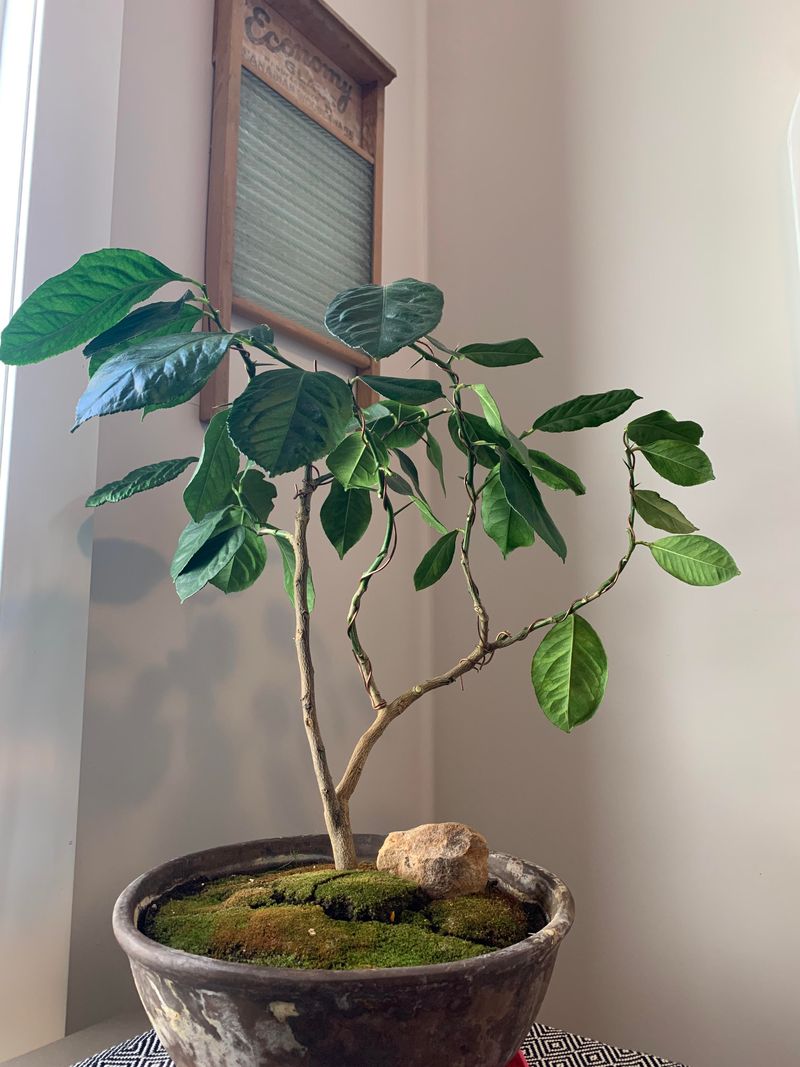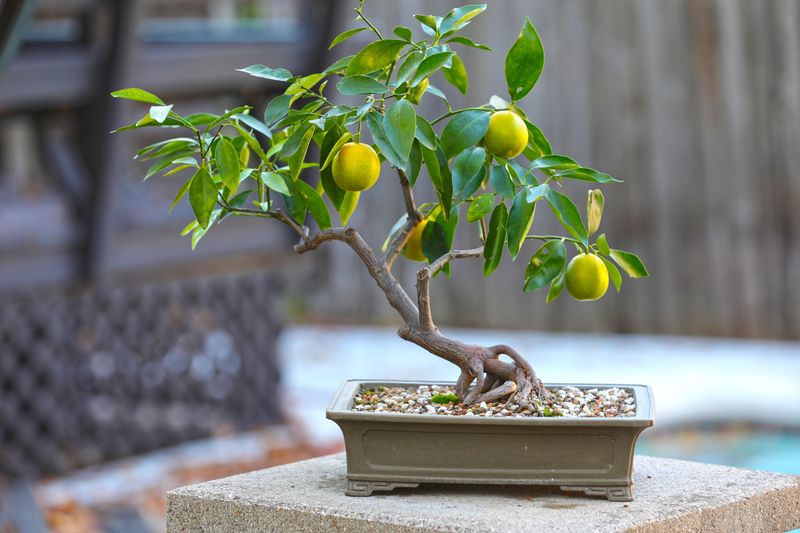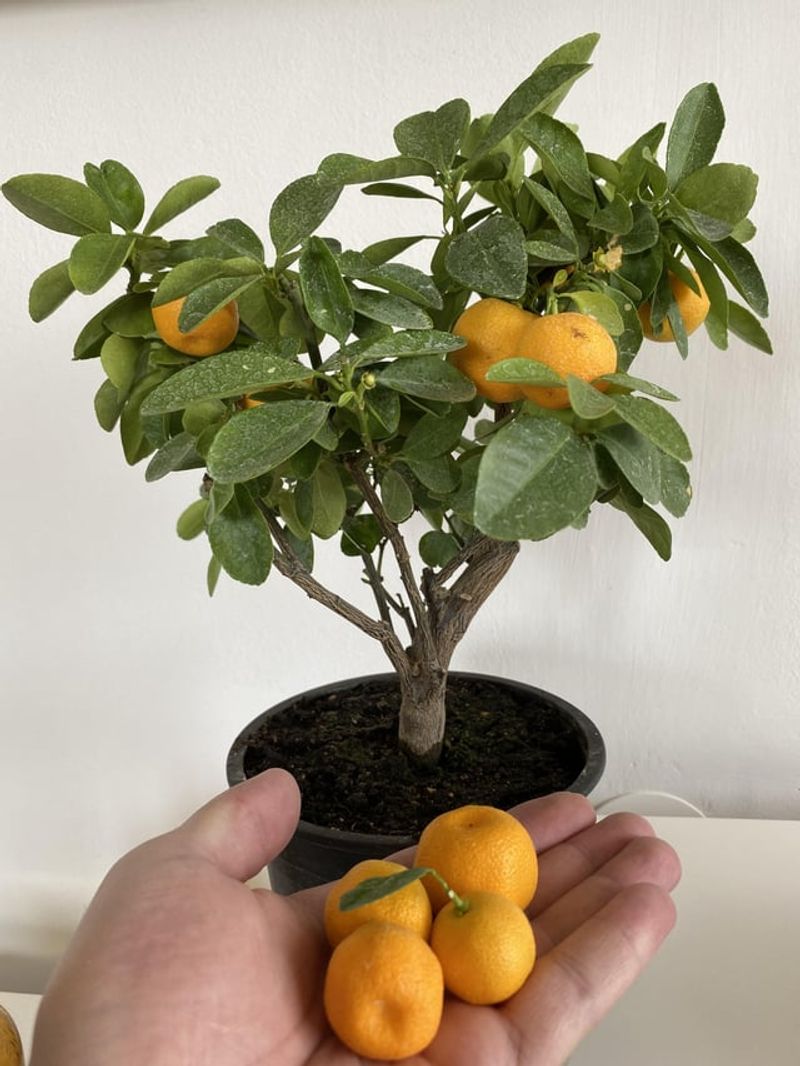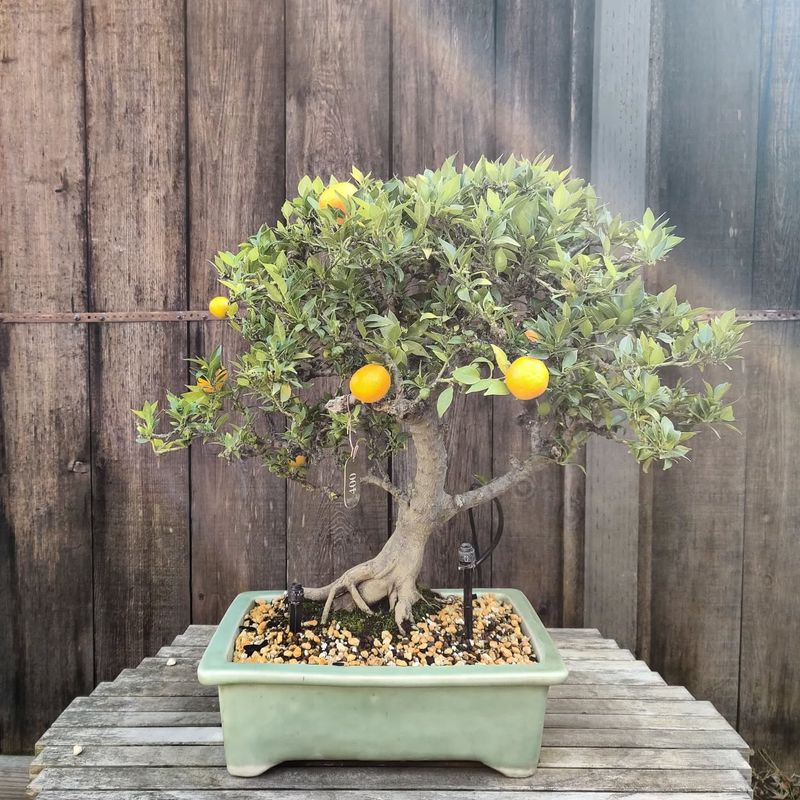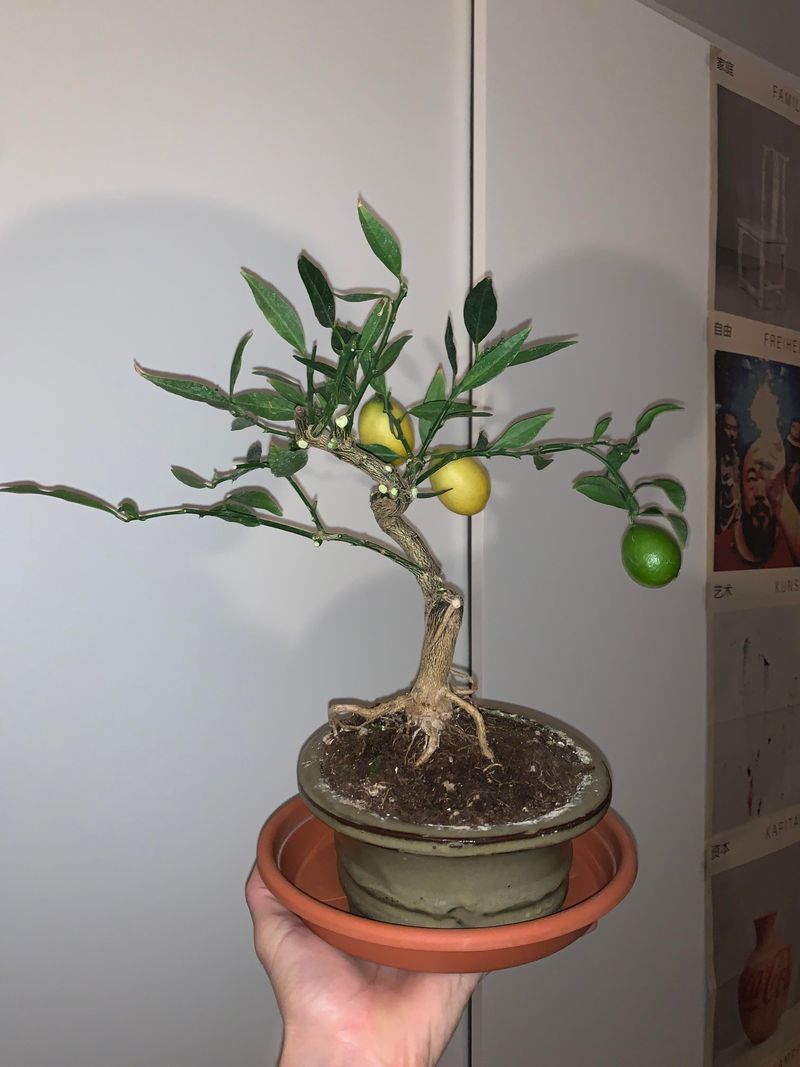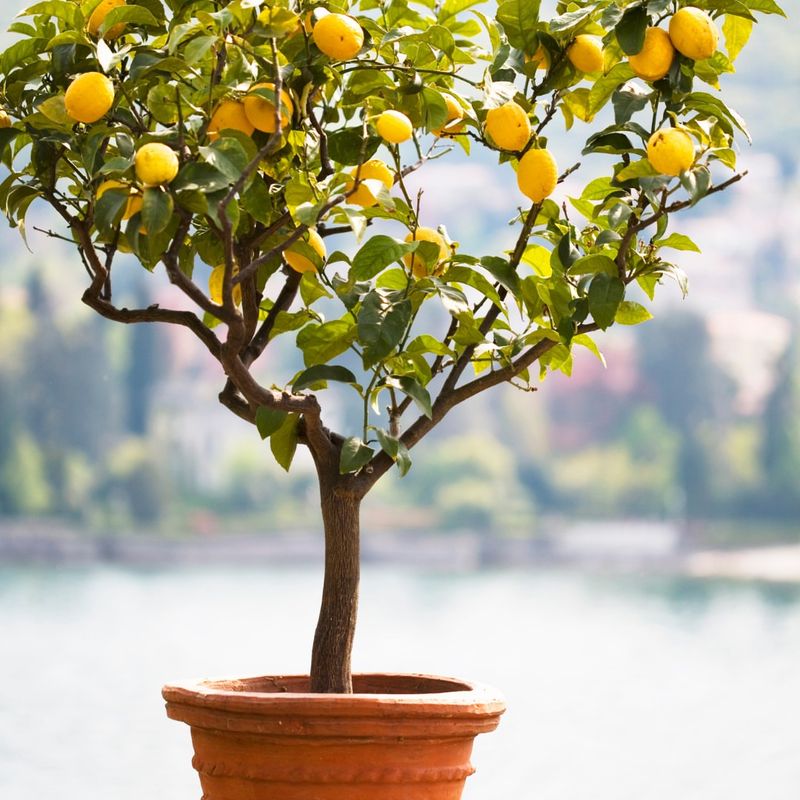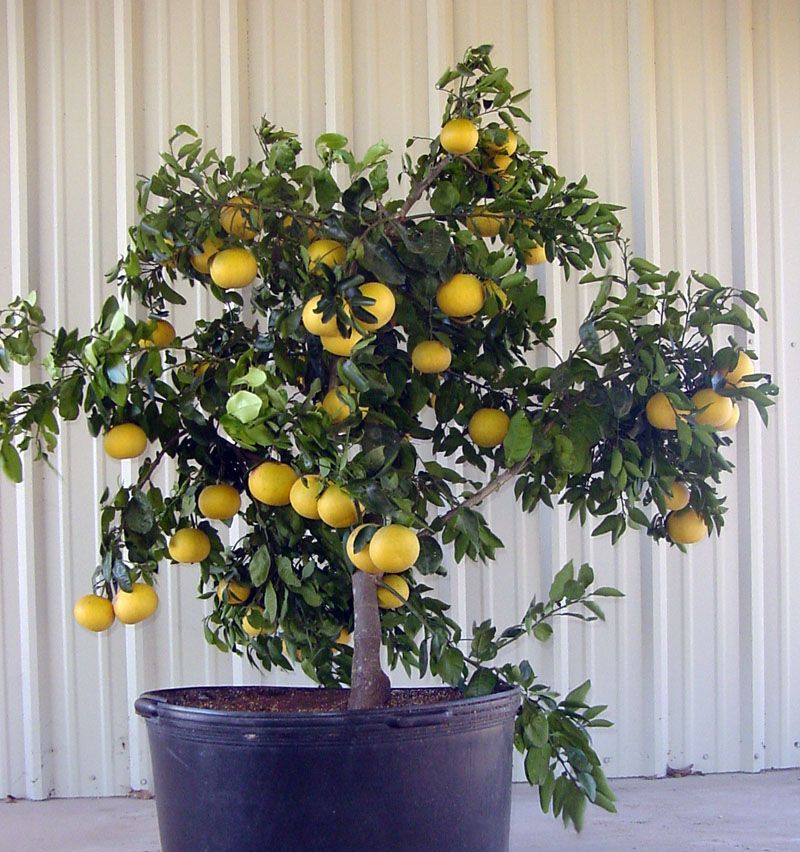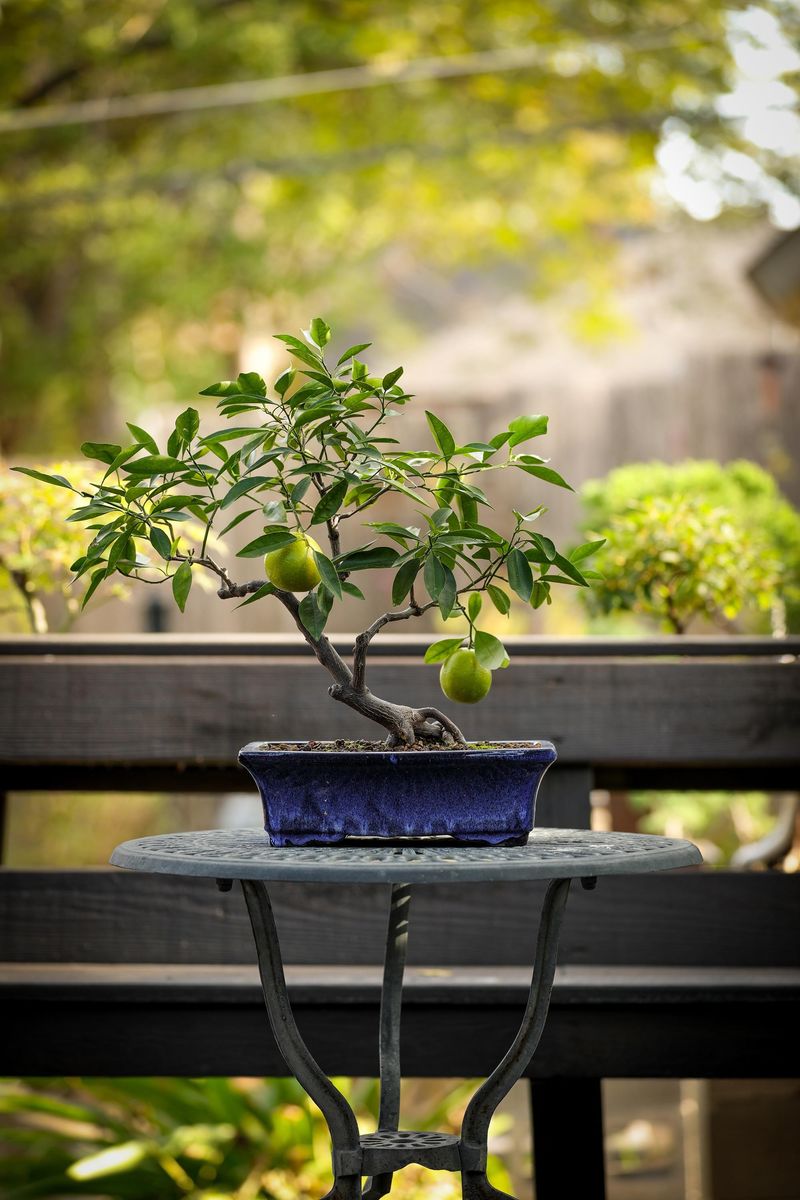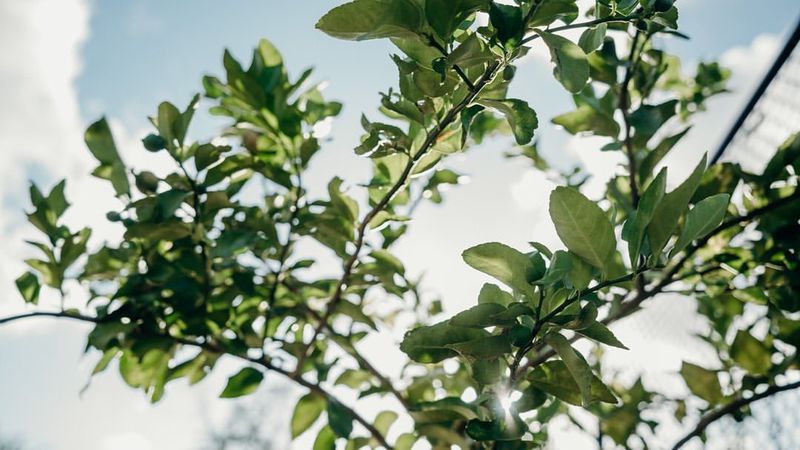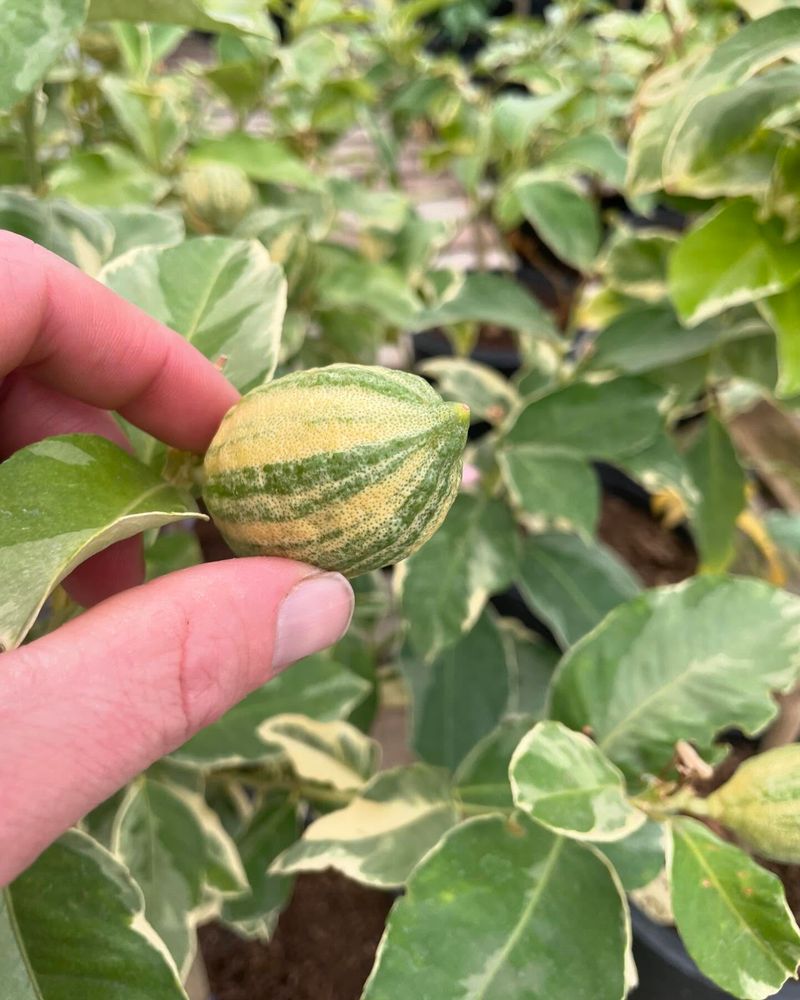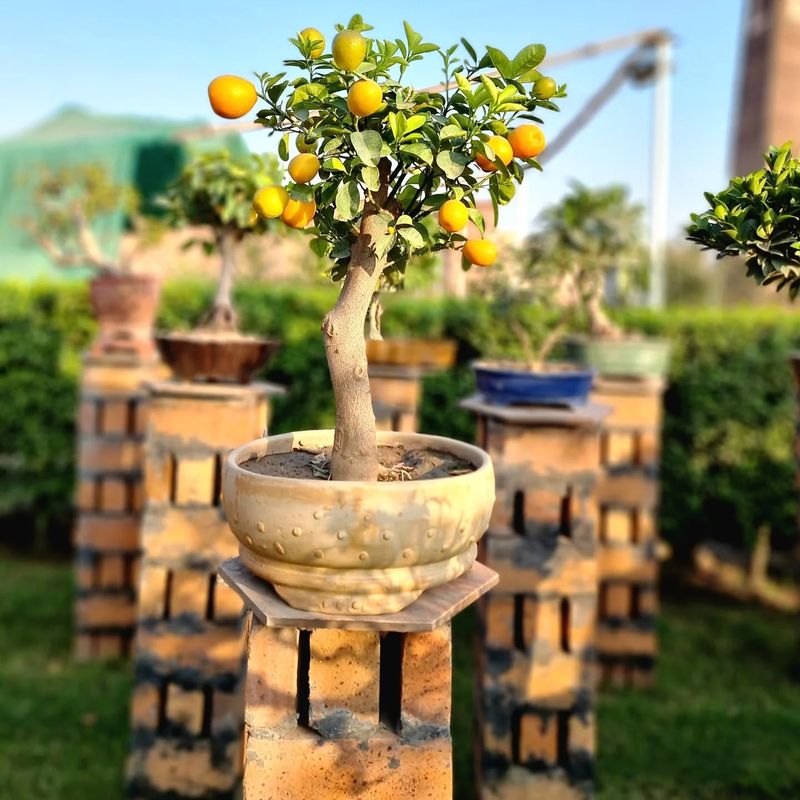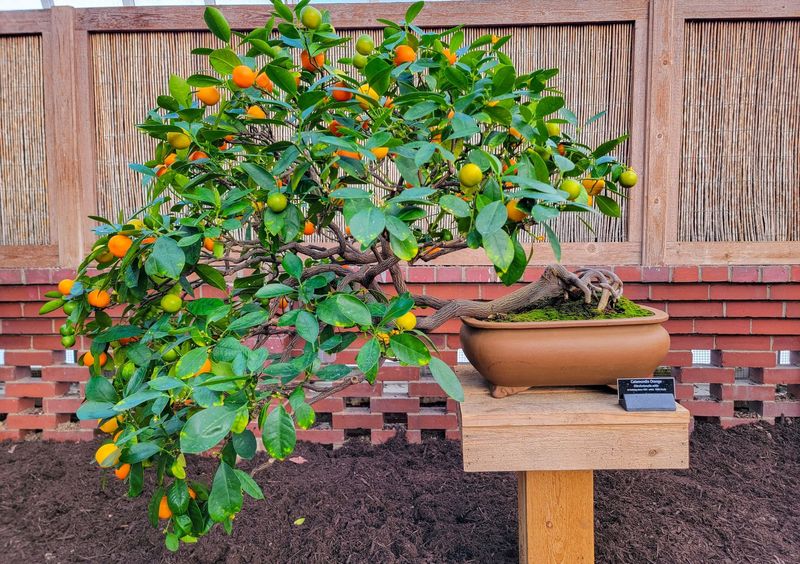Dreaming of a lemon tree but short on space? You can have your citrus and show it off too—bonsai style. With the right techniques, your mini lemon tree can stay compact, stylish, and totally functional.
These 16 clever tricks will help you shape, prune, and train your tree into a bonsai-inspired beauty that’s both space-saving and stunning.
1. Choose the Right Variety
Meyer lemons and other dwarf citrus varieties make perfect candidates for bonsai treatment. Their naturally compact growth habit and smaller leaves adapt beautifully to bonsai techniques.
Look for trees labeled as ‘dwarf’ or ‘miniature’ at your local nursery. These varieties already have genetic coding for smaller growth, giving you a head start on your bonsai journey.
Avoid standard-sized lemon trees as they require excessive pruning that can stress the plant unnecessarily.
2. Select a Shallow Container
Traditional bonsai pots restrict root growth, encouraging the compact form essential for miniature trees. For your lemon bonsai, pick a wide, shallow container with excellent drainage holes.
Ceramic or clay pots work wonderfully as they allow proper moisture regulation and provide stability for top-heavy citrus. The container should be proportional to your tree’s size – generally about 2/3 the height of your tree.
Remember that the pot becomes part of the artistic display!
3. Master Root Pruning Techniques
Root pruning is crucial for maintaining your lemon tree’s miniature size. Every 2-3 years, gently remove the tree from its pot and trim about one-third of the root mass, focusing on thicker roots.
Use sharp, clean pruning shears to make clean cuts that heal quickly. After pruning, untangle and spread the remaining roots before replanting in fresh bonsai soil.
This process not only controls size but encourages finer root development, improving nutrient uptake and overall health.
4. Create the Perfect Soil Mix
Lemon bonsai trees need specialized soil that balances moisture retention with excellent drainage. Mix equal parts akadama (clay granules), pumice, and organic compost for an ideal growing medium.
The clay component holds moisture near the roots, while pumice prevents waterlogging that can lead to root rot. The organic matter provides slow-release nutrients essential for fruit production.
Avoid regular potting soil which becomes compacted and suffocates roots in shallow bonsai containers.
5. Prune for Shape and Size
Regular pruning maintains your lemon bonsai’s artistic shape while controlling size. Focus on removing inward-growing branches, crossing limbs, and excessive vertical growth to create an open, balanced structure.
Make cuts just above leaf nodes to encourage new branching. Pruning in early spring before the growing season gives your tree time to heal and develop new growth in desired directions.
Aim for a triangular or dome-shaped silhouette that mimics mature trees in nature.
6. Try Wiring for Artistic Bends
Wiring allows you to create dramatic curves and angles in your lemon bonsai’s branches. Use aluminum or copper bonsai wire wrapped at a 45° angle around branches you wish to reposition.
Young branches are most flexible – begin training them early for best results. Always place protective material between the wire and bark to prevent damage.
Check monthly for signs the wire is cutting into growing branches and remove immediately if this occurs, rewiring if necessary.
7. Perfect Your Watering Schedule
Lemon bonsai trees need consistent moisture without becoming waterlogged. Water thoroughly when the top inch of soil feels dry to the touch – typically every 2-3 days during summer and weekly in winter.
Morning watering gives leaves time to dry before night, preventing fungal issues. Use a watering can with a fine rose attachment to avoid displacing soil.
Remember that bonsai pots dry out faster than regular containers, so check moisture levels frequently during hot weather.
8. Provide Optimal Sunlight
Lemon trees crave sunshine! Position your bonsai where it receives 6-8 hours of bright light daily. South-facing windows provide ideal indoor lighting, while partial afternoon shade protects outdoor specimens from scorching.
Rotate your tree weekly to ensure even growth on all sides. During winter months, consider supplementing with grow lights to maintain healthy foliage.
Adequate light encourages flowering and fruit production, turning your bonsai into both a beautiful and productive miniature tree.
9. Balance Fertilization Carefully
Lemon bonsai trees need regular feeding to produce flowers and fruit in their restricted containers. Apply a balanced, water-soluble fertilizer (like 10-10-10) at half-strength every two weeks during growing season.
Switch to a low-nitrogen, high-phosphorus formula when you want to encourage blooming. Always water thoroughly before fertilizing to prevent root burn.
Pause feeding during winter months when growth naturally slows, resuming in early spring when new leaves appear.
10. Manage Flowering and Fruiting
Seeing tiny lemons on your bonsai is exciting, but too many fruits can stress a miniature tree. Allow only 2-3 fruits to develop at once, removing excess flowers or newly formed fruits.
Support branches carrying fruit with small props or wires to prevent breaking. Hand-pollinate indoor trees by transferring pollen between flowers using a small paintbrush.
Remember that fruiting takes energy – give your tree recovery periods between fruiting cycles to maintain health.
11. Control Humidity Levels
Citrus trees appreciate higher humidity than most homes provide naturally. Create a microclimate around your lemon bonsai by placing it on a humidity tray filled with pebbles and water.
Mist the foliage regularly during dry winter months, but always in the morning so leaves dry before nightfall. Grouping plants together naturally increases local humidity through transpiration.
Avoid placing your bonsai near heating vents or air conditioners that create dry, turbulent air.
12. Practice Leaf Reduction Techniques
Smaller leaves create a more proportional, authentic bonsai appearance. Encourage leaf reduction by pinching new growth tips and allowing your tree to grow in slightly root-bound conditions.
Defoliating (removing all leaves) during active growth periods forces new, smaller leaf development. This technique should be used sparingly – only on healthy, vigorous trees once every few years.
Consistent pruning and adequate sunlight naturally result in smaller, more compact foliage over time.
13. Protect from Pests Naturally
Lemon bonsai trees commonly attract spider mites, scale insects, and aphids. Inspect leaves weekly, paying special attention to undersides where pests hide.
Treat minor infestations with insecticidal soap spray or neem oil, applying in early morning or evening. For preventative care, wipe leaves monthly with a soft cloth dampened with diluted milk – this creates a surface hostile to many pests.
Healthy trees naturally resist pests, so maintain optimal growing conditions as your first line of defense.
14. Maintain Proper Winter Care
Lemon bonsai trees aren’t frost-hardy and need protection when temperatures drop below 50°F (10°C). Move indoor specimens away from cold windows and drafts during winter months.
Reduce watering frequency but don’t allow the soil to completely dry out. Outdoor trees should be brought inside or placed in an unheated garage or shed where temperatures remain above freezing.
Provide extra light during shorter winter days to prevent leaf drop and maintain health.
15. Create Deadwood Features
Advanced bonsai artists incorporate deadwood elements called jin (deadwood branches) and shari (exposed trunk areas) to create an aged, weathered appearance. On lemon bonsai, carefully strip bark from selected small branches using jin pliers.
Treat exposed wood with lime sulfur to preserve and bleach it white, creating dramatic contrast against green foliage. This technique mimics natural aging processes seen in ancient citrus trees.
Use deadwood features sparingly – they should enhance, not dominate your design.
16. Display Your Living Artwork
Presentation elevates your lemon bonsai from plant to artwork. Place your tree on a wooden stand at eye level where its structure can be appreciated from multiple angles.
Consider seasonal accents – small decorative stones or tiny ceramic figures that complement the tree’s style. The display location should provide proper light while showcasing your bonsai as a focal point.
Rotate the display seasonally to highlight different aspects – flowers in spring, fruit in summer and fall, branch structure in winter.

